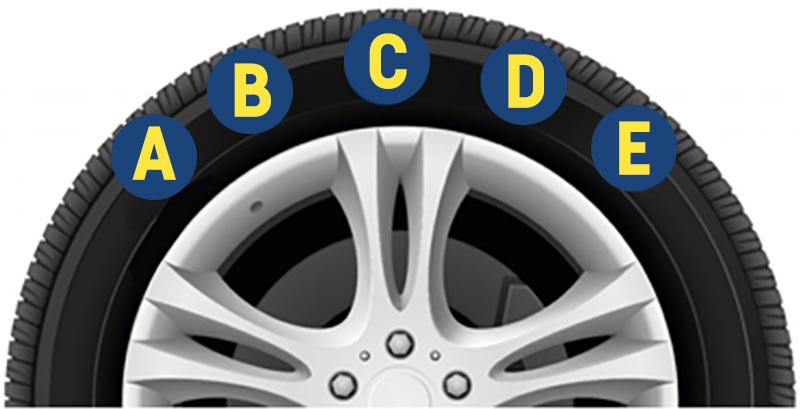
Fuzz’s tips on staying in control in ice and snow
NewsThere’s nothing like a cold, crisp, icy winter’s day for sharpening the senses, especially if one is behind the wheel of a car slithering uncontrollably in a direction unfettered by driver input. Happily, there are numerous ways to avoid getting into a skid situation, but the first thing that we need to know is what happens in a skid.
In a normal forward or reverse driving situation, the vehicle’s wheels are rotating in unison, the steered axle wheels providing directional guidance and the coefficient of friction between the road surface and tyre. This continually alters depending on road conditions.
On meeting a slippery surface, as in the case of ice, the coefficient of friction becomes significantly reduced, but more so when a lubricant becomes involved in the scenario, which in this case is normally water.
In much the same way as an unwary person slipping while running around the edge of a swimming pool, the contact between hard shiny surface (ice) and the tyre is lost by the introduction of water, thus allowing physics to gain control, with the vehicle now travelling in a direction determined by velocity, trajectory and mass.
This loss of control is of course extremely dangerous and can lead to damage to persons and property, or even death, but there are avoidance actions we can take.
Do not drive:

The first, and easiest way of avoiding being in this hair-raising situation is not to go out driving in such conditions. Working from home can be an option for some, as may grocery delivery and the like, but there remains a goodly percentage of the population that are unable to use these options.
Be prepared:
Being equipped for driving in icy conditions is key to a relaxed and focused journey. If sub-zero weather is forecast, place a windscreen cover over your car’s screen. You can substitute this by using a towel or even a sheet of newspaper. Do ensure that whatever cover you use goes between the wipers and the screen, thus preventing them from sticking together.
Spray, scrape, shovel, salt:

Have a screen scraper and some de-icer to hand, to help make light work of ice removal. Just a scraper will often do the trick. I use an old pliable plastic ‘L’ plate as a scraper and it works brilliantly. Also, a bag of rock salt and a shovel kept in your car’s boot can be useful if you find yourself getting stuck in snow.
Winter wear:

Do ensure that you have plenty of warm clothes with you, as well as sturdy footwear. A good quality and waterproof winter coat is also a must. Food; perhaps a sandwich, biscuits or cake, fruit and nuts, and a flask of hot drink or soup should be part of your journey preparation if going any distance. Cars can and do suffer breakdowns, as well as getting stuck in ice and snow. Please also remember to have a fully charged mobile phone with you.
Be late:
It’s far better to get to your destination a tad late than not at all, so if you awake to find a winter wonderland awaiting you, simply phone ahead and let folks know that you are on your way. Of course, you could always set your alarm for half an hour earlier… just saying.
Plan your route:

Try and take a main road route to your destination, even if it lengthens your journey, rather than using smaller, less well-gritted or cleared shortcuts. Generally, major roads remain clearer for longer, and they receive the lion’s share of attention from the gritting crews.
Also, tell your nearest and dearest your route and planned ETA, so that they can send out the rescue squad services, if necessary.
Fit seasonal tyres:

Winter tyres are designed to help cope with some of the worst that the colder weather throws at us, and there’s always the option of snow tyres for those likely to encounter prolonged periods of coverage. Being unable to complete your journey is often miserable and may put you in danger, so give you and your passengers the best prospect of a successful jaunt.
Slow down:
Reducing your speed may help you to avoid sudden braking or changes of direction on icy surfaces. Most modern cars are fitted with anti lock braking systems (ABS), but don’t depend on it to get you out of every hairy situation. If your car’s ABS warning light is illuminated, have the vehicle inspected and rectified by an expert. Also, take care when cornering. Sub-zero temperatures may produce black ice, which can take unwary drivers by surprise.
Use engine braking:
Engine braking is a method of slowing down a vehicle by using its power source’s resistance rather than its dedicated wheel braking system. On internal combustion engine powered cars, this may be achieved by selecting progressively lower gears, thus slowing the vehicle while keeping its wheels rotating and so avoiding a skid situation. Electric cars and hybrids offer this in the form of regenerative braking.
Avoid wheelspin:
Lack of adhesion between the tyre and the road can render your driven wheels all a-spin. You can help to avoid this by gently easing your car away from a standstill in 2nd gear, thus supplying less torque (turning power) to your car’s wheels and lessening the chance of spinning them ineffectually. Using higher gears and lower revs throughout your icy journey may help avoid instances of the same while on the move.
Space is ace:
Leave plenty of space between yours and other cars. Stopping distances may be increased by 10 times or more in icy conditions. When passing other cars, again ensure that you have plenty of space to make the manoeuvre.
If you get stuck:
Only run your car’s engine if it is safe to do so and exhaust fumes cannot get into the car’s interior. If you are in deep snow, keep the exhaust exit area clear and help to mark your car’s position using something brightly coloured, to help rescue services locate you, if necessary.
Check your tyres’ pressures and condition:

Whatever your vehicle and tyre manufacturers’ recommendations are, please stick to them. If you’re uncertain of how to check your tyre pressures, head down to your local fitting shop or garage and ask them to do it for you, or for instruction. Tyre condition is vital too; if yours are getting close to the minimum legal tread depth, or if they are old, get them changed.



